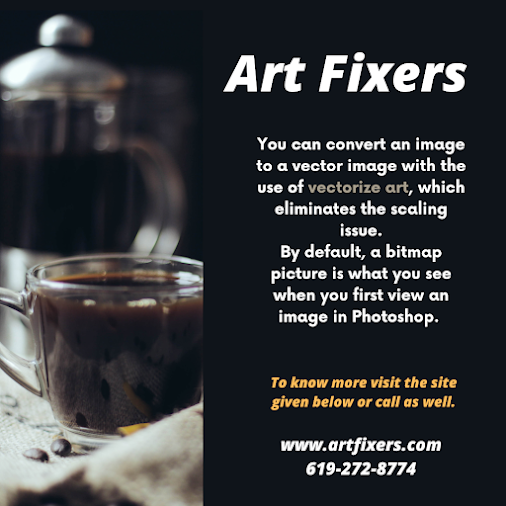Vector graphics are broadly used for making digital graphics today due to many advantages of vector graphics over other image editing procedures, like pixel graphics. But initially you should know what vector graphics are? Vector graphics are comprised by points or coordinates on a screen that are linked through lines and curves called paths. Vector graphics are mainly used for creating logos, line art, 3D-like renderings, and animations, among other examples available.
Here are the most important advantages of converting image to graphic:
1. Vector graphics have unlimited resolution:
It can be believed that vector graphics have unlimited resolution because they never lose their quality, even if you zoom in on them indefinitely. This indicates that they are “resolution independent,” unlike pixel (raster) graphics that depend completely on the resolution of an image.
However, vector graphics do not depend on pixels but on coordinates on a plane, you can expand a line, curve, or shape to whatever size you want and always see their exact form and features. This tool always knows where the points are on the screen, it exactly knows the line that adjoins them. Alternatively stated, it knows the position and direction between two points.
2. Vector graphics are extendable:
Extendibility is “the capacity to be changed in size or scale.” Through vector graphics, extendibility means three main things:
1. You can view objects in any size you desire.
2. Objects can be easily extended down or up.
3. You can Convert Image to Graphics at any size you want without compromising quality.
Initially, this signifies that you can grab an object and promptly zoom in on a tiny detail and analyze all its features and immediately return to a more adjustable size. Through vectors, you can zoom in and out effortlessly. Additionally, vector software enables you to grab an object (a circle, square, or star, for instance) and quickly scale it down to microscopic or huge proportions in a heartbeat.
3. Vector graphics are small sized files:
Vector files have fewer information in them than, for instance, pixel files (such as a picture taken by a phone or digital camera). They only possess in them a bunch of ensembles rather than more complex information, like the thousands, or even millions, of pixels in a digital photo. This happens to be an advantage of vector files, because they can have very compressed drawings in them that need less information to generate.
4. Vector graphics are involuntarily created:
You can also generate vector graphics in ways corresponding to the way you draw on paper. This is so since the building blocks and vector graphics are lines. Vector modifying software enables you to easily generate frames such as squares, rectangles, circles, and stars with gestures that match drawing on paper. This makes converting image to graphic prompt.
5. Vector graphics are quickly altered:
In addition to creating objects involuntarily, you can modify vector graphics easily and accurately. For instance, you can generate a square, pick it up, and drive it around the canvas. Also, you can now take that square and scale, rotate, skew, or invert it. However, you can create a line with two points and easily add other nodes to it.
For more details on Converting Vector Images to Graphics, explore – Artfixers.










